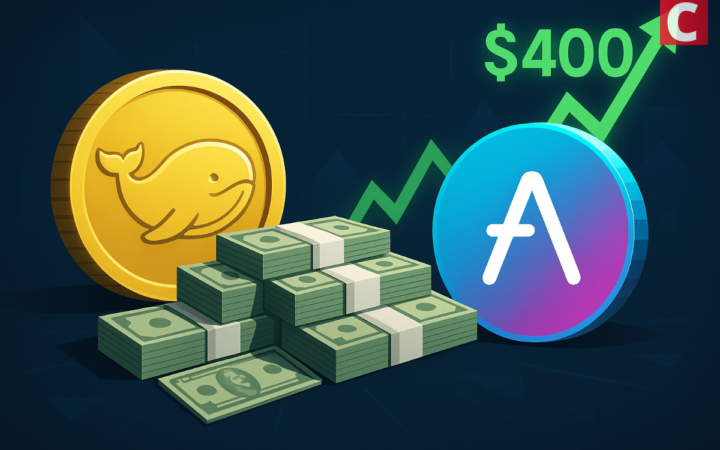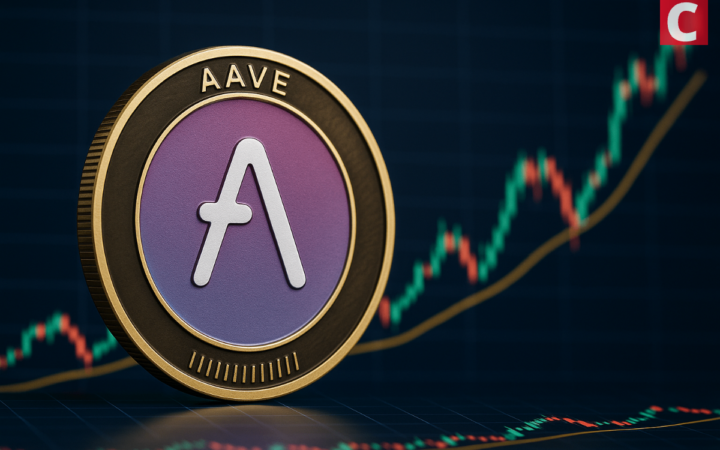
Please check out latest news, expert comments and industry insights from Coinspeaker's contributors.
DeFi staking is an advantageous activity and a great way to passively earn an income, but it is not without risks.

Earning income passively without putting in a lot of physical labour is a feature that is not restricted to the traditional finance environment alone. With the introduction of revolutionary concepts like the blockchain and its use cases such as cryptocurrency and decentralized finance, a whole new world to earning passively has been born. One of such solutions that can help you make some passive income is staking.
DeFi disrupts traditional finance (TradFi) institutions by providing easy access to financial tools with better yields. Individuals are in control of their financial responsibilities interfacing directly with protocols without the difficulties of TradFi’s go-betweens. This article explores the opportunities in DeFi staking, the staking benefits in DeFi, and how to passively earn income with various DeFi staking tools and methods.
Staking in DeFi means locking your crypto assets in a DeFi application (dApp) to earn rewards in return. By having your crypto assets locked up in a smart contract protocol, you effectively become a validator for the protocol or network. Validators are important to blockchain networks that run on the Proof of Stake (PoS) consensus mechanism as they rely on validators to maintain the security integrity of the network. In contrast to the Proof of Work (PoW) mechanism that requires a significant amount of energy to compute on-chain transactions, validators in PoS networks stake their crypto tokens to run validator nodes. This requires them to carry out on-chain duties such as transaction blocks creation and validation, as well as maintaining the integrity of the network. Hence, a simple way to explain it will be to say that PoS needs human capital to supply liquidity and validate transactions on the blockchain network.
Essentially, validators are incentivized to behave well and act in the network’s interest or risk losing their staked tokens to slashing if they act maliciously. A staking protocol incentivizes users to keep their crypto assets for the long term. Stakers are rewarded through direct token emissions as well as earn parts of the fees and revenue generated by the DeFi protocol.
One of the easiest and safest ways to passively accumulate income in DeFi is via staking, and here are some things to consider when seeking out the best staking opportunities;
Not every token can be staked. For instance, Proof of Work (PoW) tokens like Bitcoin cannot be staked. Token staking is available primarily on Proof of Stake (PoS) networks. There is a wide range of PoS tokens to choose from. Each offering varying yields. Use solutions such as Frontier to help you discover different staking options for tokens and their corresponding APY. Endeavour always do your research to avoid getting sucked in by high-risk APYs.rns.
Choosing the right DeFi staking platform is as important as the staking rewards. Good staking platforms make your DeFi staking process easier and more efficient. Different DeFi staking platforms provide various staking options and tools. Choosing the platform that aligns with your staking goals will help optimise your yields. Always do your research. The DeFi space is filled with bad actors. Make use of reliable analytics tools like CoinMarketCap or CoinGecko to get information. Using reputable platforms like Frontier makes it easy to carry out DeFi staking activities across multiple blockchain networks from one user interface. Some categories of staking platforms in DeFi include:
Staking in DeFi can be compared to earning interest on your savings account deposit in traditional financial institutions like banks. However, it offers so many advantages. DeFi staking gives users the opportunity to leverage higher interest rates than is obtainable in traditional savings accounts and other traditional financial products. Moreso, users retain full control of their finances in DeFi. And most importantly, through staking protocols can maintain network security and decentralization. DeFi reduces the incidence of corruption, provides transparency and eliminates hidden fees.
Using platforms like Frontier, you can quickly put your crypto assets to work without stress. Frontier allows you to access various staking options across multiple blockchains from one single interface. This efficient user approach will enable you to stake your tokens indirectly as a delegator, choosing from multiple validators and earning significant APY returns at no fees. Frontier also acts as a bridge to various DeFi protocols like Aave, Uniswap, etc., giving you direct access to these platforms from one interface. You can also stake and track your assets directly in your non-custodial crypto wallets through Frontier by easily connecting your multiple wallets to the Frontier app.
DeFi staking is an advantageous activity and a great way to passively earn an income, but it is not without risks. For instance, risks associated with staking include slashing, impermanent loss, malicious attacks and hacking, smart-contract bugs, etc. Hence, it is always essential to do due diligence before using any protocol and stick to reputable and trusted platforms for your DeFi activities.
Disclaimer: Coinspeaker is committed to providing unbiased and transparent reporting. This article aims to deliver accurate and timely information but should not be taken as financial or investment advice. Since market conditions can change rapidly, we encourage you to verify information on your own and consult with a professional before making any decisions based on this content.

Please check out latest news, expert comments and industry insights from Coinspeaker's contributors.




